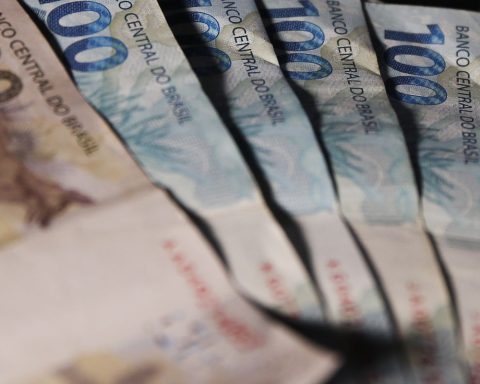After ending 2021 slightly above BRL 5.6 trillion and at a record level, the Federal Public Debt (DPF) is expected to reach between BRL 6 trillion and BRL 6.4 trillion by the end of this year. The figures were released today (27) by the National Treasury, which presented the Public Debt Annual Financing Plan (PAF) for 2022.
According to the PAF, which sets targets for the public debt for this year, the government created a space to reduce the share of fixed-rate securities (with fixed interest rates and defined in advance) and increase the share of papers adjusted by the Selic rate ( basic interest rates in the economy). This would help attract investors to Selic-linked bonds, which should reach double digits from the next meeting of the Central Bank’s Monetary Policy Committee next week.
According to the document, the share of the DPF linked to the Selic should rise to a range between 38% and 42%. It currently stands at 36.8%. The share of fixed rate bonds should end the year between 24% and 28%, against 28.9% currently registered.
The proportion of public debt corrected by price indices should be between 27% and 31%. Today it is at 29.3%. The share of the foreign exchange-corrected debt, considering the external public debt, should end the year between 3% and 7%. The current percentage is at 5%. The numbers do not take into account the purchase and sale of dollars in the futures market by the Central Bank, which interfere in the result.
Last year, the PAF initially predicted that the Federal Public Debt could end 2021 at R$5.9 trillion. Due to the reduction of uncertainties related to the covid-19 pandemic, the limit was reduced to BRL 5.8 trillion in May.
Composition
In 2021, the DPF saw an increase in Selic-indexed securities, which rose from 34.8% in December 2020 to 36.8% last month, within the band of 33% to 37% in force for the last year. According to the Treasury, this was due to the rise in the Selic rate, which attracted back investors in these papers that had fled at the beginning of the covid-19 pandemic, in 2020.
The share of fixed rate papers (with interest defined at the time of issuance) fell from 34.8% in 2020 to 28.9% in 2021. The percentage was below the minimum established by the 2020 PAF, which estimated that the share would end the year between 31% and 35%. With the increase in the Selic rate, investors fled from fixed-rate bonds, which are more subject to market fluctuations and which can bring losses if redeemed before the deadline.
The share of inflation-adjusted bonds rose from 25.3% to 29.3%, within the range established between 26% and 30%. The exchange-corrected debt, considering the external public debt, closed 2021 at 5%, also within the range of 3% to 7% estimated in the PAF.
Bonds adjusted by floating rates increase the risk of public debt, because the Selic puts more pressure on government indebtedness when the economy’s basic interest rates rise. When the Central Bank readjusts the basic interest, the part of the domestic debt adjusted by the Selic increases immediately.
In theory, prefixed papers bring more predictability. This is because the interest on these bonds is set at the time of issuance and does not vary over time. That way, the Treasury knows exactly how much interest it will pay several years from now, when the bonds mature and investors have to be repaid. However, fixed rate bonds have higher rates than the Selic and increase the cost of public debt in times of economic instability.
Deadline
The Annual Financing Plan also made room for increasing the DPF term, despite the possible instabilities of the election year. At the end of 2021, the average term was 3.8 years. The PAF stipulated that it will be between 3.8 years and 4.2 years at the end of December. The Treasury publishes estimates in years, not months. The portion of debt that matures in the next 12 months will end 2022 between 19% and 23%. It currently stands at 21%.
According to the Treasury, the government has two security mechanisms to guarantee financing capacity in the event of an economic crisis that does not allow the Treasury to launch bonds on the market. First, the government has enough international reserves to pay the maturities of the external public debt in 2022, which total R$16.9 billion. In addition, the government has a cushion of BRL 1.2 trillion to cover just over nine months of domestic public debt maturities.
Through public debt, the National Treasury issues bonds and borrows money from investors to honor commitments. In exchange, the government undertakes to return the funds with some correction, which can follow the Selic rate, inflation, exchange rate or be fixed in advance, defined in advance.

















